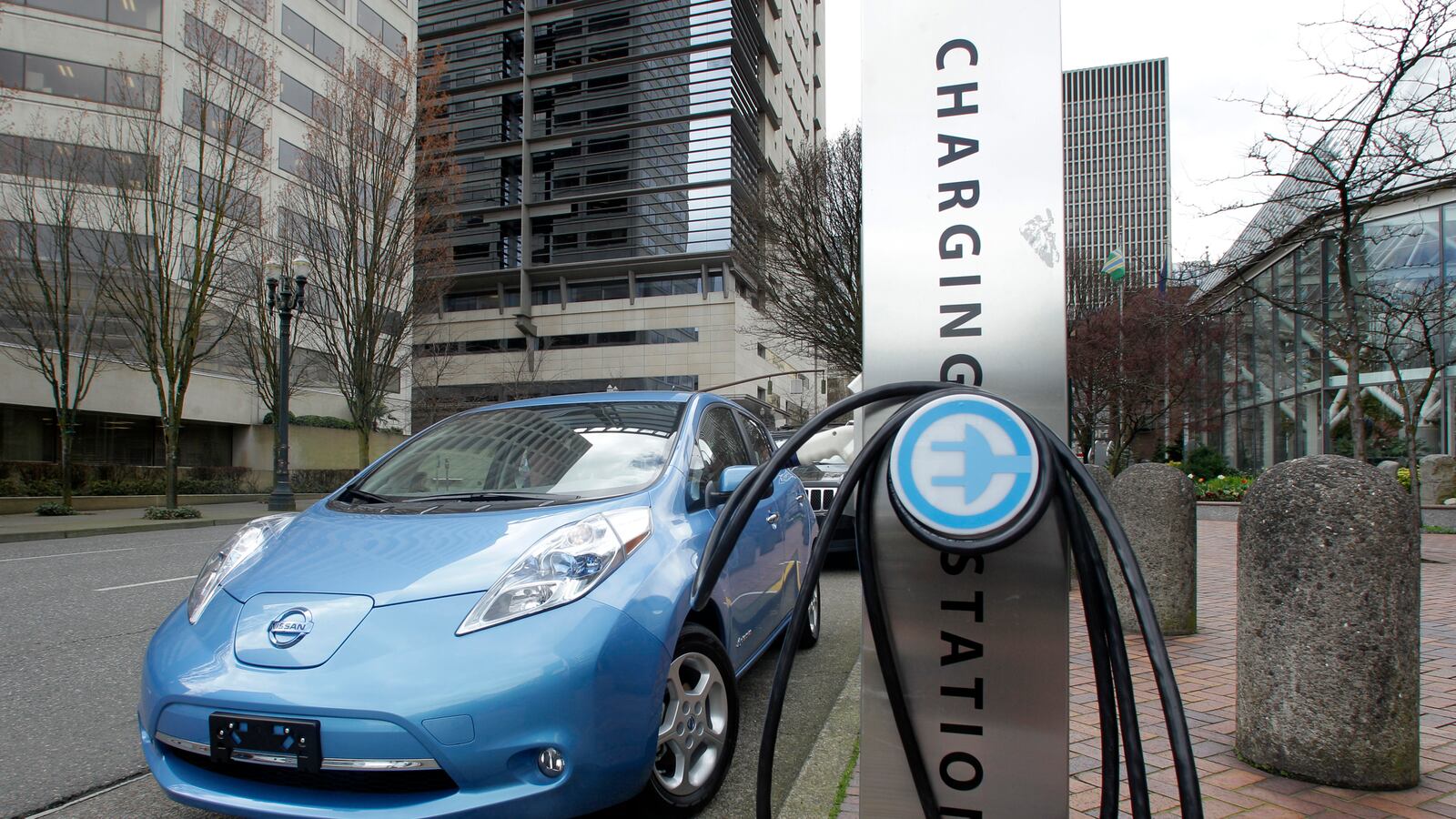
The new year is only two weeks old, but we already have a candidate for one of the strangest public policy proposals of 2013. Virginia Governor Robert McDonnell has proposed eliminating the state’s 17-cent-per-gallon gas tax, increasing the state’s sales tax to 5.8 percent from 5 percent, and levying a new $100 annual charge on vehicles that run on alternative fuels. Meanwhile, in Washington State, electric vehicle owners are subject to a new law that requires them to pay a $100 annual registration fee.
It seems somewhat perverse. For years, the federal government (and many state governments) have provided significant financial penalties to people who purchase and use gasoline profligately—i.e. gas taxes—while offering significant financial incentives for people to buy gas-sipping hybrids or electric vehicles. And why not? We’ve decided as a society that it’s good to discourage the use of expensive, polluting, imported oil as a transportation fuel.
But these moves also highlight a new reality. In recent years, there have been significant changes in the way Americans move around the country. And a series of concurrent, related developments have significantly reduced the utility of the gasoline tax. Two decades ago, even one decade ago, the gasoline tax (18.4 cents per gallon to the federal government, and varying amounts to state governments) was an effective user tax. Government could raise funds from people who drove on roads and highways to pay for the maintenance and construction of those very roads and highways. “It was a very reliable tax,” said John Felmi, chief economist at the American Petroleum Institute. “But the outlook has changed significantly.” In 2011, the federal gas tax brought in about $32 billion. It will likely bring in less in the future.
Let’s review. First, Americans are simply driving less than they used to. Blame the weak recovery, an aging population, increasing urbanization, and the growth of public transport. (In some places, like Portland, Ore., you can also blame the bicycle.) Quiet as it is kept, many regions have built popular light-rail systems (Phoenix, Salt Lake City, Los Angeles, Charlotte, Houston). In the first three quarters of 2012, trips on U.S. public transportation rose 2.6 percent from the first three quarters of 2011, according to the American Public Transportation Association. The third quarter of 2012 represented the seventh straight quarter of ridership growth for America’s bus, train and light-rail systems.
According to the Department of Transportation, from January through October 2012, Americans racked up 2.464 trillion vehicle miles. That’s up a little from 2011, but it’s below the figure reported for the first 10 months of 2004; and it is off about three percent from the comparable period in 2007.
So we drive fewer miles. And, as I reported last month, we drive those fewer miles in more fuel-efficient cars. There’s been a quiet revolution in fuel efficiency over the last several years, with the introduction of hybrids, hybridlike technology in traditional vehicles, and a general focus on getting more for your money. In 2012, according to University of Michigan researchers Michael Sivak and Brandon Schoettle, the average fuel economy of new vehicles rose 6 percent to a record high of 23.8 miles per gallon; that’s up 14 percent from 2008. The U.S. car fleet turns over once every 10 or 11 years. With every passing month, old gas guzzlers are being junked and are being replaced by newer vehicles that get better mileage.

There’s another factor at work. At the margins, gasoline is on the outs as the U.S. fleet electrifies. Consumers can buy cars that run on electricity like the Leaf and the Tesla, or cars that run on a combination of gas and electricity like the Volt and plug-in hybrids. In the commercial sector, fleet owners are outfitting buses, pickup trucks, and delivery vans to run on compressed natural gas (CNG). The website Hybridcars.com publishes a monthly dashboard of sales. In December 2012, American consumers bought 43,690 hybrids, 7,669 plug-in electric vehicles and 235 cars that run on CNG. That’s less than 4 percent of total cars sold in the month, but they are starting to mount.
Add it all up—Americans drive less, in more fuel-efficient cars, and some drive in cars that don’t really use gasoline—and you get a decline in gasoline consumption. Here’s the Energy Information Administration’s data on weekly motor gasoline supply, and here’s a five-year seasonal analysis. And that means the amount of gas tax revenue is declining and likely to fall further. (Here’s a chart of state and local tax fuel revenue courtesy of the Tax Policy Center, which shows revenue was essentially unchanged between 2007 and 2010.)
Out of necessity, governments are looking for other ways to fund transportation projects. In Virginia, Governor McDonnell is seeking to shift the funding base from motorists who buy gasoline to everybody who buys retail goods. Sure, a higher retail tax is regressive. But, as John Felmi, chief economist of the American Petroleum Institute, notes, “so is a gasoline tax.” Geoffey Styles, an energy consultant, notes that the money collected for the gas tax goes into the same pool that funds the state’s contribution to the Washington, D.C., area Metro system. “Shifting the mechanism of collecting revenue to something that would include people who don’t own cars but use mass transit is fair,” he notes. As for charging electric vehicle users a little extra—as Washington is doing and Virginia would like to do—it does make sense to try to collect user fees from drivers, regardless of what fuels their cars. A Nissan Leaf causes the same amount of wear and tear on a road that a Chevrolet Malibu does.
We can count the gasoline tax as yet another way that technology is disrupting longstanding business models. In future columns, we’ll look at other ways that states and the federal government might adapt.





